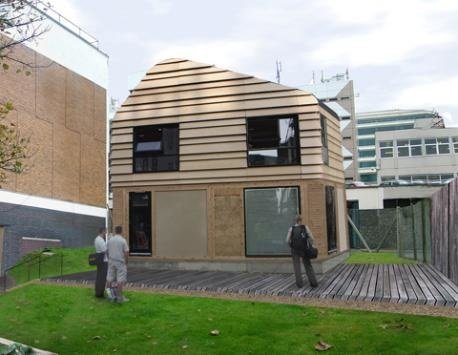Case study of Waste House in Brighton | Grand Parade Campus
Waste House is being constructed in the Grand Parade Campus of University of Brighton. Brighton is town in the southeast of England, UK. Duncan Baker Brown and Cat Fletcher are leads in the project. It is a challenging project. This house is going to be used as a studio for postgraduate design students. It will be open to public for viewing. The aim of the project is to demonstrate how waste can be efficiently used for the construction purposes without having to compromise on the quality.

Materials selected for the Waste House Project
Roof – solar roof (Solar PV tiles have been used on the roof.)
Sky harvester – Natural light source
Rainwater harvesting
Timber from local sustainer sources
Second hand timber
Since it is second hand timber and that its strength cannot be determined, the structural engineer assumes that the timber is of the weakest type and compensates in the design accordingly.
Walls
Lightweight prefabricated panels = lots of insulation
Reuse waste materials such as Hemp, glass, earth, tins, straw, carpet tiles
Heavy weight prefabricated panels = lots of heat storage
Chalk wall – 10 tonnes of chalk used + 10% clay
(Although only 100% chalk would mean better wall strength)